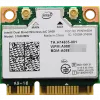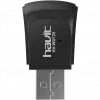The Bluetooth SIG completed the Bluetooth Core Specification version 4.0 and has been adopted as of 30 June 2010. It includes Classic Bluetooth, Bluetooth high speed and Bluetooth low energy protocols. Bluetooth high speed is based on Wi-Fi, and Classic Bluetooth consists of legacy Bluetooth protocols.
Bluetooth low energy (BLE), previously known as WiBree, is a subset to Bluetooth v4.0 with an entirely new protocol stack for rapid build-up of simple links. As an alternative to the Bluetooth standard protocols that were introduced in Bluetooth v1.0 to v3.0, it is aimed at very low power applications running off a coin cell. Chip designs allow for two types of implementation, dual-mode, single-mode and enhanced past versions.The provisional names Wibree and Bluetooth ULP (Ultra Low Power) were abandoned and the BLE name was used for a while. In late 2011, new logos “Bluetooth Smart Ready” for hosts and “Bluetooth Smart” for sensors were introduced as the general-public face of BLE.
- In a single mode implementation the low energy protocol stack is implemented solely. CSR, Nordic Semiconductor and Texas Instruments have released single mode Bluetooth low energy solutions.
- In a dual-mode implementation, Bluetooth low energy functionality is integrated into an existing Classic Bluetooth controller. Currently (2011-03) the following semiconductor companies have announced the availability of chips meeting the standard: Atheros, CSR, Broadcom and Texas Instruments. The compliant architecture shares all of Classic Bluetooth’s existing radio and functionality resulting in a negligible cost increase compared to Classic Bluetooth.
Cost-reduced single-mode chips, which enable highly integrated and compact devices, feature a lightweight Link Layer providing ultra-low power idle mode operation, simple device discovery, and reliable point-to-multipoint data transfer with advanced power-save and secure encrypted connections at the lowest possible cost.
General improvements in version 4.0 include the changes necessary to facilitate BLE modes, as well the Generic Attribute Profile (GATT) and Security Manager (SM) services with AES Encryption.
Core Specification Addendum 2 was unveiled in December 2011; it contains improvements to the audio Host Controller Interface and to the High Speed (802.11) Protocol Adaptation Layer.










